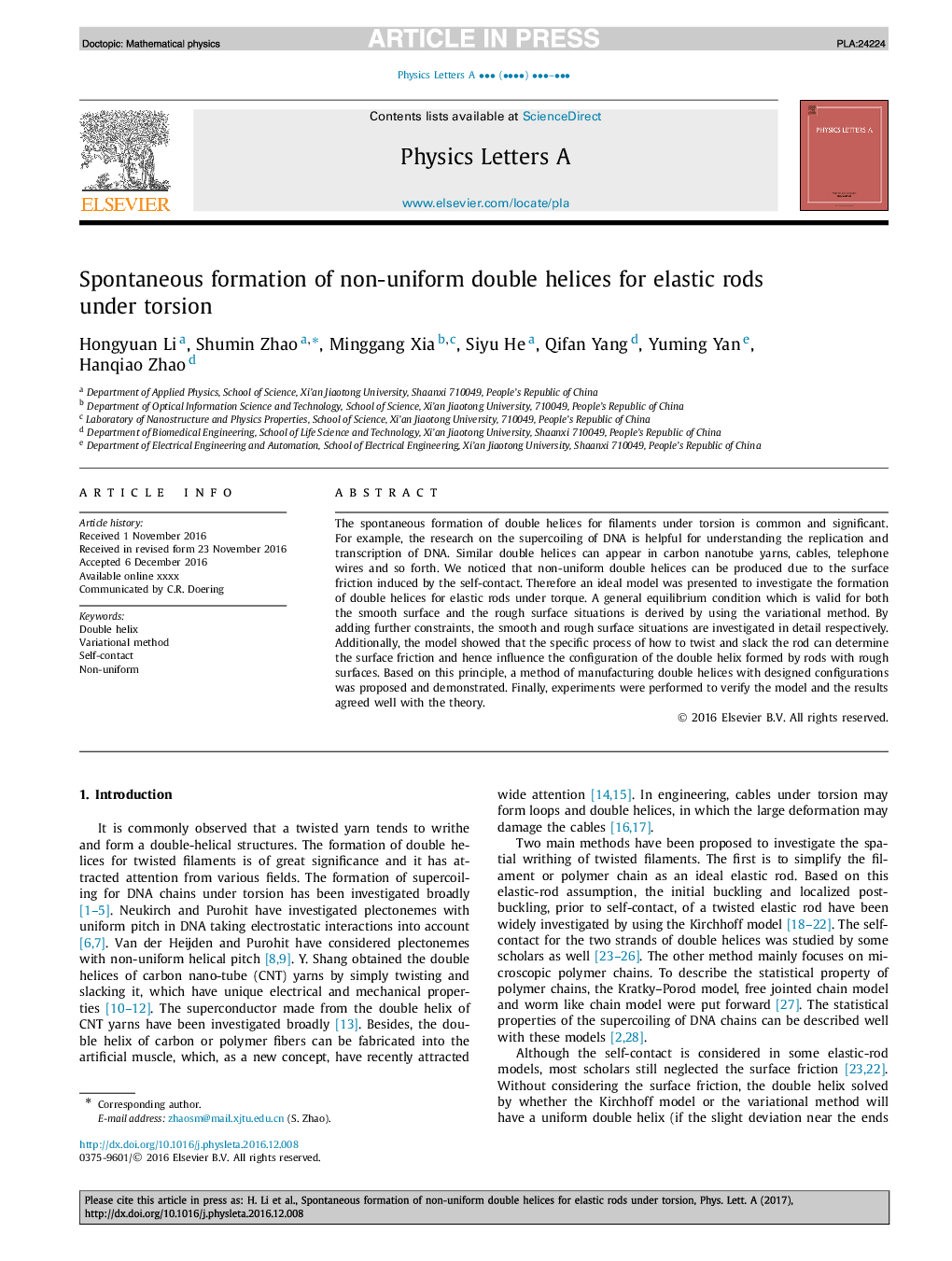| Article ID | Journal | Published Year | Pages | File Type |
|---|---|---|---|---|
| 5496990 | Physics Letters A | 2017 | 12 Pages |
Abstract
The spontaneous formation of double helices for filaments under torsion is common and significant. For example, the research on the supercoiling of DNA is helpful for understanding the replication and transcription of DNA. Similar double helices can appear in carbon nanotube yarns, cables, telephone wires and so forth. We noticed that non-uniform double helices can be produced due to the surface friction induced by the self-contact. Therefore an ideal model was presented to investigate the formation of double helices for elastic rods under torque. A general equilibrium condition which is valid for both the smooth surface and the rough surface situations is derived by using the variational method. By adding further constraints, the smooth and rough surface situations are investigated in detail respectively. Additionally, the model showed that the specific process of how to twist and slack the rod can determine the surface friction and hence influence the configuration of the double helix formed by rods with rough surfaces. Based on this principle, a method of manufacturing double helices with designed configurations was proposed and demonstrated. Finally, experiments were performed to verify the model and the results agreed well with the theory.
Related Topics
Physical Sciences and Engineering
Physics and Astronomy
Physics and Astronomy (General)
Authors
Hongyuan Li, Shumin Zhao, Minggang Xia, Siyu He, Qifan Yang, Yuming Yan, Hanqiao Zhao,
